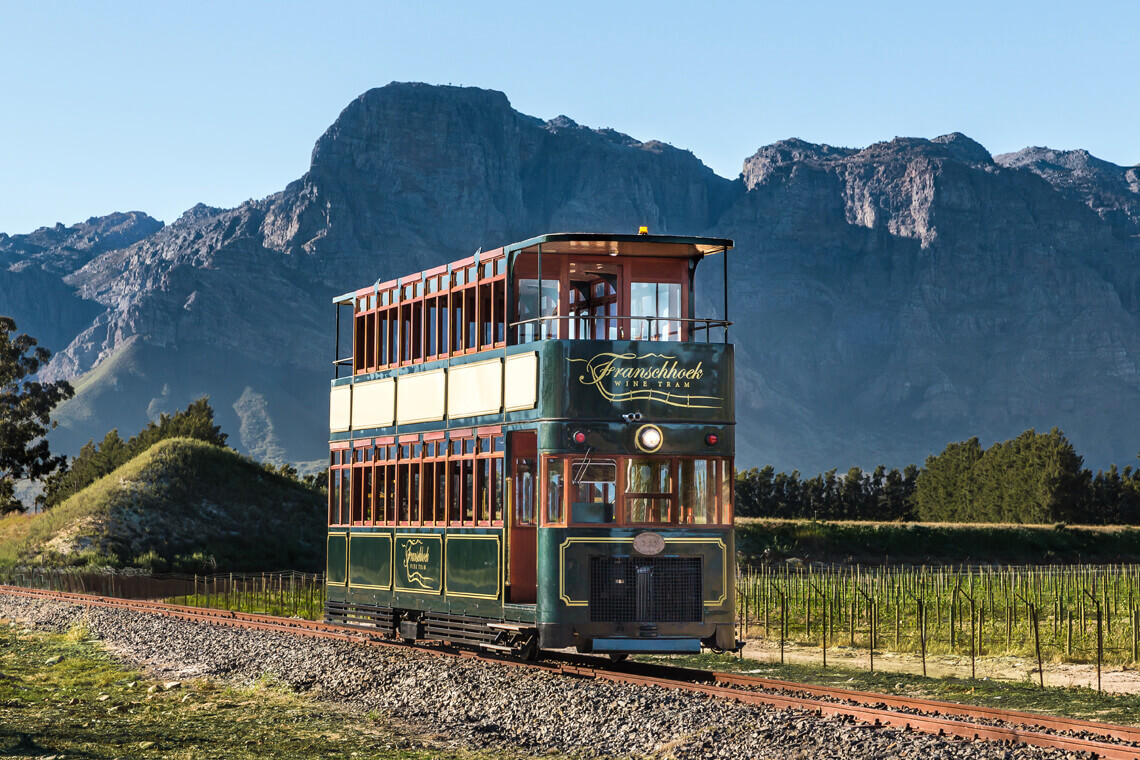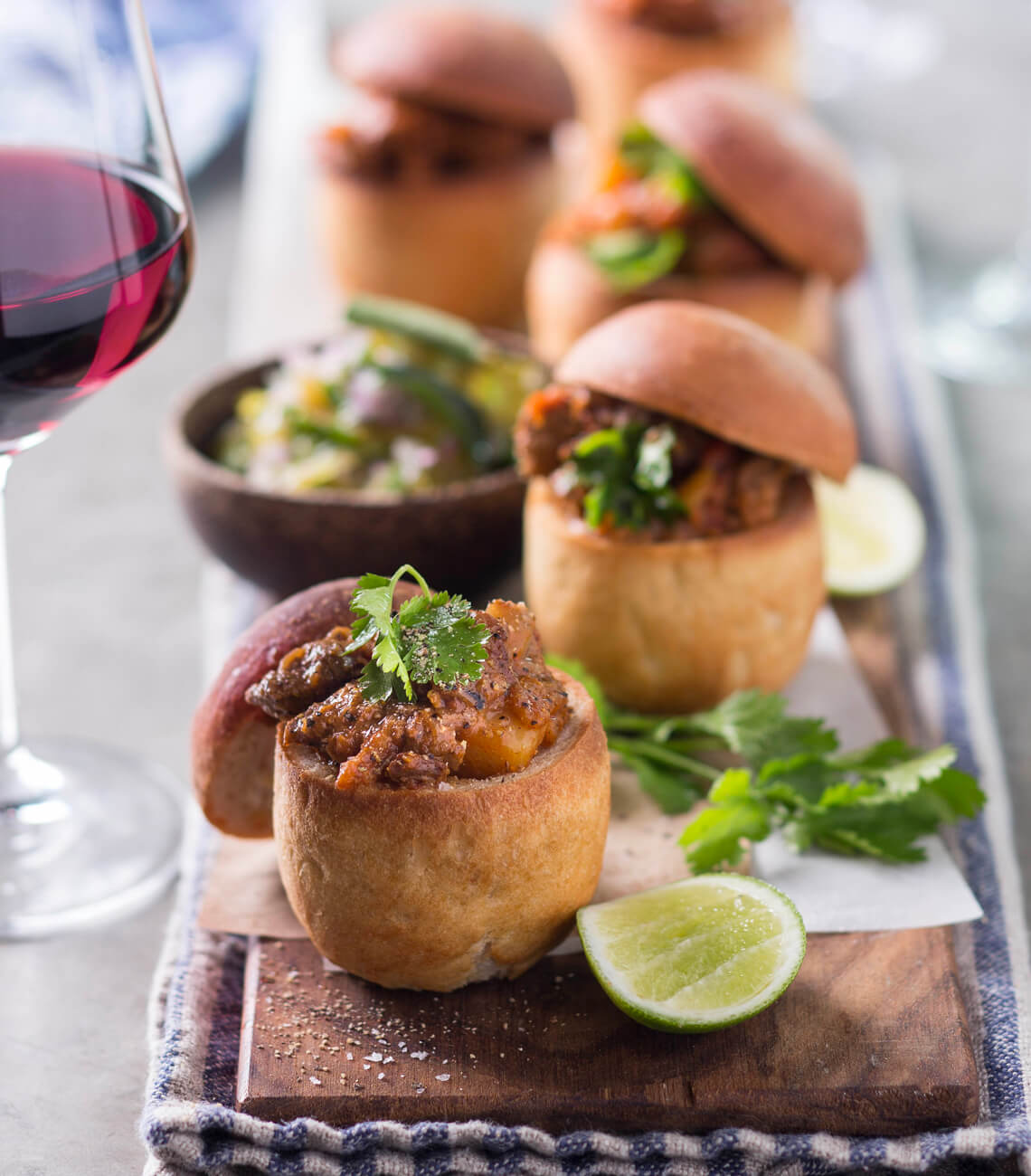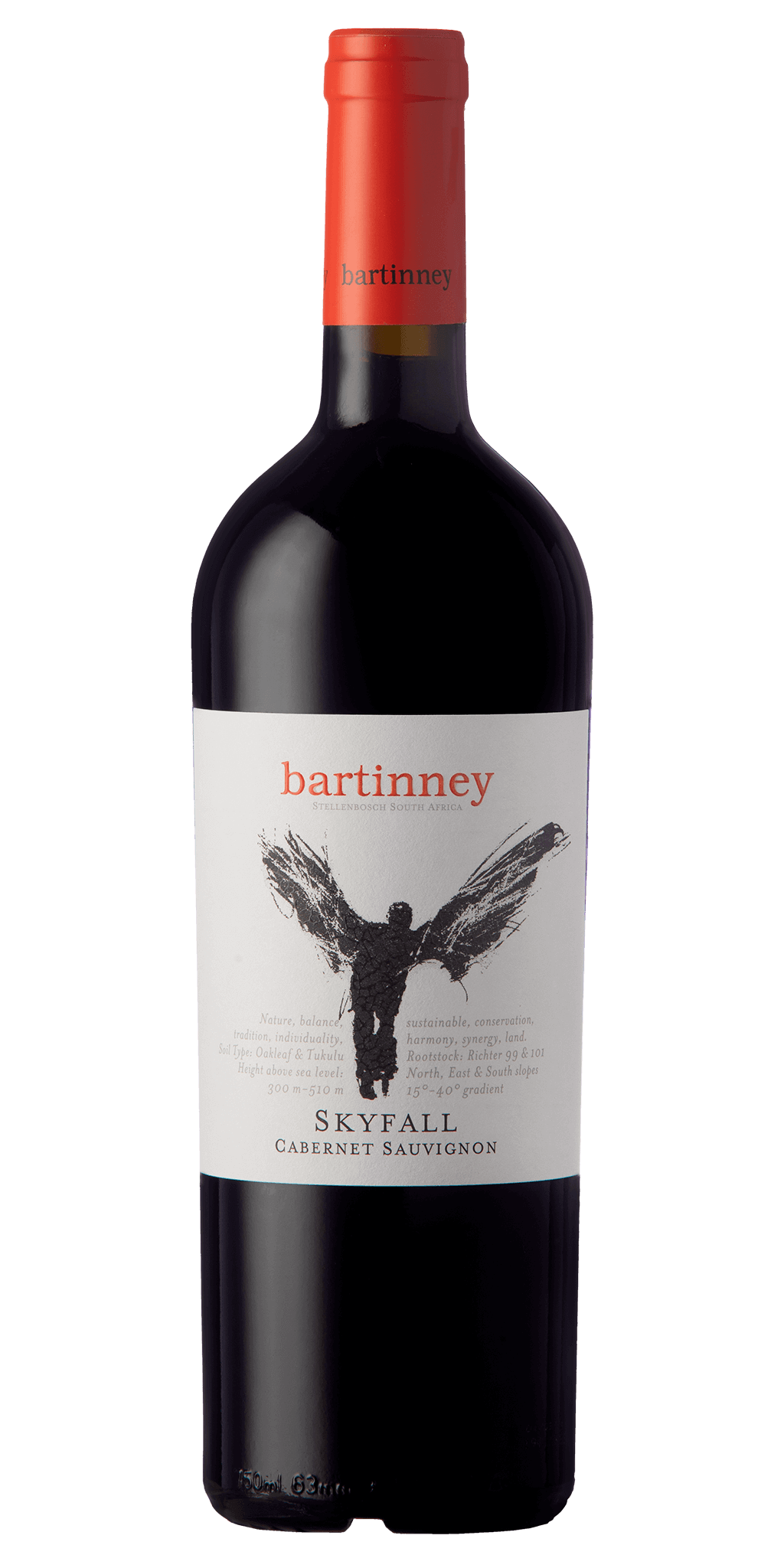The Franschhoek Wine Tram is a lovely way to explore the wine farms of this beautiful valley and especially in autumn when the vineyards, lavender fields and fruit trees change color. The tram offers eight different routes and each route visit up to six wine estates. A total of 24 wine farms are currently on the Franschhoek route, many of them are imported by Cape Ardor.
The tram uses the old railway tracks and for farms further afield, wine trolleys.
This Hop-on Hop-off experience allows visitors to not only taste wine, but enjoy cellar tours, picnics, lunch and even grape picking. Some participating wine farms offer curated wine experiences that includes premium wine tastings, a food and wine pairing, cellar and vineyard tour and a three-course lunch.
Guests can also book for exclusive wine and cuisine experiences where the private use of a tram is included, a historical village walking experience where no trams are included or a group experience for more than 20 guests.
“All trams depart from the wine tram office on the corner of Main Road and Cabriere Street, Franschhoek. Arrive early and enjoy a coffee and a Beignet, a classic French pastry,” says Cathrine Lombard, Hospitality Manager, Franschhoek Wine Tram.

Franschhoek Wine Tram

Stunning views of Franschhoek
Transfers from Cape Town, Stellenbosch, Paarl and Strand and surrounds are available at affordable rates. Guests are collected at their accommodation address and returned after the tour (later return trips can also be arranged).
If guests want to buy wine, a wine storage facility is provided. A duplicate sticker – one for their safekeeping and one on their wine – is provided. The parcels can then be collected when presenting the sticker at their original starting point, the Franschhoek Terminal.
Many of the wineries on the routes work exclusively with Cape Ardor, and USA travelers can place wine orders at the tasting rooms that will be delivered upon their return.

The tram offers eight different routes and each route visit up to six wine estates
Farms on the eight routes include Grande Provence Heritage Wine Estate, Haute Cabrière, Holden Manz, Leopard’s Leap Family Vineyards, Mont Rochelle, Paserene Winery, Rickety Bridge Winery and Vrede en Lust Wine Estate.
Three popular stops are Haute Cabrière (Home to the Cap Classique range of Pierre Jourdan on the grey and pink line; Leopard’s Leap on the grey and pink line; and Vrede en Lust on the purple and orange line.
Try your hand at sabrage
At Haute Cabrière, tram guests can enjoy a cellar tour and Cap Classique sabrage before indulging on tapas or buying their favorites at the deli. The farm boasts some of the best views of the valley and a selfie in the big yellow frame on the lawn, is a must.
The estate is celebrating the fact that Cap Classique has been made in South Africa for 50 years. Their Sunday brunch now include a glass of Pierre Jourdan Cap Classique paired with each dish on the menu. Other special moments to share are cooking classes with chef Nic van Wyk every last Thursday of the month until June; live music on certain Saturdays and First Friday surprises. Visitors can also enjoy a Pierre Jourdan and macaron pairing from Friday to Sunday. Bookings required for all the above experiences at reservations@cabriere.co.za

Sabrage at Haute Cabriére

MCC offerings while taking in the view
South African table with traditional dishes
Leopard’s Leap offers a variety of tastings from their wine ranges for 1 to 5 people and groups; rotisserie lunches prepared by chef Christiaan Visser and his team; pizzas; brunches; a kiddies menu, a sweets and dessert counter and wine cocktails. The South African table is offered as a special lunch experience. This feast gives guests the opportunity to taste authentic South African dishes and to learn more about the country’s food heritage while sharing a meal. Visit the events calendar on leopardsleap.co.za to check for the next scheduled date and make sure to book 48 hours in advance on leopardsleap.co.za.

The South African table
Wine and chocolate pairing
Vrede en Lust Estate offers a wine and Lindt chocolate pairing; a cheese and wine pairing; a garden walk and horse-drawn carriage rides. The bistro offers breakfast, lunch and afternoon sweets with coffee.
Lamb Bunny Chow: Serves 8

Lamb Bunny Chow from Leopard’s Leap
Bunny chow, often referred to simply as a bunny, is a South African fast food dish consisting of a hollowed-out loaf of white bread filled with curry. It originated among Indian South Africans of Durban.
Ingredients
Oil for frying
1 shoulder of lamb, boned and cut into cubes
1 onion, chopped
4 cloves garlic, grated
1 chili, seeded and chopped
1 x 5 cm piece ginger, grated
2 carrots, peeled and diced
1 tablespoon ground coriander
½ teaspoon ground turmeric
1 teaspoon ground cinnamon
2 star anise
½ teaspoon ground cloves
1 whole stick cinnamon
½ teaspoon ground white pepper
2 tablespoons curry leaves
1 tin whole peeled tomatoes, pureed
1 cup brown lamb stock
1 cup yoghurt
Salt
2 potatoes, peeled and diced
Fresh coriander and yoghurt for garnish
8 mini bread loaves, hollowed out and toasted
Method
Pre-heat oven to 160 °C. Heat an oven-proof pan, with a lid, on the stove over a moderate heat.
Brown the diced lamb in the oil and remove.
Sweat the onions in the same pan, adding more oil if necessary. Once soft, add the garlic, chili and ginger. Cook for 1 minute.
Add the carrot and spices and cook again for 1 minute. Add the curry leaves and browned lamb along with the tomato, stock and yoghurt. Season with salt and place the pan, with the lid on, in the oven for 2 hours.
Remove from the oven and add the potatoes. Place back in the oven and continue to cook until the potatoes are tender (roughly 30 – 45 minutes).
Remove from the oven and leave to cool.
Note: Best served the next day.
Assemble the bunnies by filling the loaves with the curry mix, then garnish with fresh coriander and a spoon of yoghurt.
Enjoy with the very versatile Leopard’s Leap Chardonnay Chardonnay.




 +1 888 812 2543
+1 888 812 2543